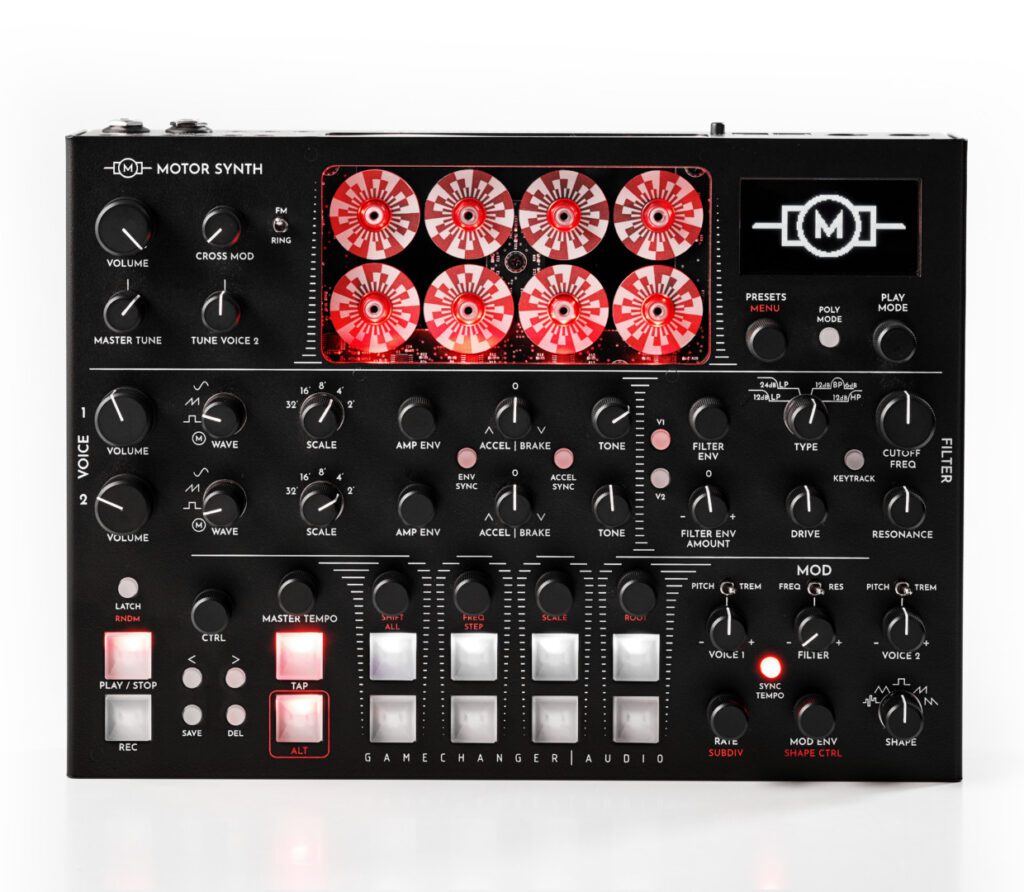The concept comes from the piano. Sostenuto pedal usually is known as the middle pedal on pianos. Its aim is to hold longer selected notes that have been pressed on keys leaving other notes unaffected. And this is exactly how the PLUS pedal works.
How to use it? Play and hold a note or a chord and press the damper pedal. Now the notes you have played will continue to sound after releasing keys on piano.
How to use it with the PLUS pedal? Play and hold a note or a chord and press the damper pedal. Now the notes you have played will continue to sound after releasing strings on a guitar. The exact same concept of sostenuto pedal on piano!
Sustain pedal is the rightmost pedal on pianos. If the sostenuto pedal prolongs selected notes, the sustain pedal does the opposite. Everything you play with a sustain pedal pressed down will sound as long as you release the pedal.
How to use it? Depress the sustain damper pedal and play anything. Each and every note will continue to sound until you release the pedal.
Sostenuto pedal – prolongs only notes played before the damper is pressed
Sustain pedal – prolongs all notes played after the damper is pressed
Similar guitar pedals that offer freeze-type effects operate entirely differently.
The PLUS’ algorithm “looks” for an attack and decay in your playing. That happens instantaneously which is the reason we like to call it the smart looper. As the result is an endless loop of what you’ve played a second ago, the sustained sound will have the exact characteristics of your playing.
But alternatives pick up the sound that you’ve just played and regenerates the effect with a synth engine. Just like a tuner pedal.
And in this case, the result will sound static, leaving behind overtones, dissonances, and other nuances that define your sound.
To use the PLUS PEDAL with an acoustic instrument or a microphone it is essential to adjust the input signal on your pre-amp to instrument level as the mic level is the weakest and the PLUS pedal won’t operate as it is designed to.
The PLUS PEDAL operates as mono in / mono out effect.
As the main ins/outs, the fx loop is all mono, too.
It is possible to use the PLUS PEDAL as an additional effect if you’re playing a wind instrument, for example, a flute. In that case, usually, the sound of the instrument is being picked up with a mic. But for the PLUS pedal to operate, the audio signal that the mic generates should be raised to instrument level. Otherwise, the sostenuto effect generated by the PLUS PEDAL will be barely audible. The most convenient way on how to do that would be using a pre-amp.
It is possible to use the PLUS PEDAL as an additional effect if you’re playing an acoustic instrument, for example, an acoustic guitar. In that case, usually, the instrument’s sound is being picked up with a mic or pickup. For the PLUS pedal to operate, the audio signal should match to instrument level. If your instrument has a pickup, it should match the necessary instrument level. But if you’re using a mic to harvest the sound, the audio signal will need to be lifted from mic to instrument level. And the most convenient way of how to do that would be using a pre-amp.
The PLUS PEDAL is an excellent alternative for a sostenuto pedal if your vintage pianet doesn’t have it.
Definitely! Gamechanger Audio PLUS pedal was designed with guitar, bass, synth, and acoustic instrument players in mind – operating in full EQ spectrum and offering a sostenuto that sounds like the real instrument.
The PLUS PEDAL is a digital device that uses a powerful DSP chip to process audio and achieve a sostenuto effect using a patent-pending algorithm.
The PLUS PEDAL operates with a buffered bypass with A/D D/A Conversion of 16 bits as it is a digital device.
TS abbreviation stands for TIP and SLEEVE. Usually known as instrument cables, TS cables are being used to send an unbalanced mono signal because of their usage. Visually the easiest way to distinguish a TS and TRS jacks would be looking at how many rings it has. If it’s a single – TS cable. If two of them – TRS cable.
TRS abbreviation stands for TIP, RING, and SLEEVE. The added conductor RING offers to send higher signals via TRS cables. Either balanced mono signals or stereo signals. And as they provide twice as much signal, TRS cables are usually used for controlling with external footswitches or expression pedals.
